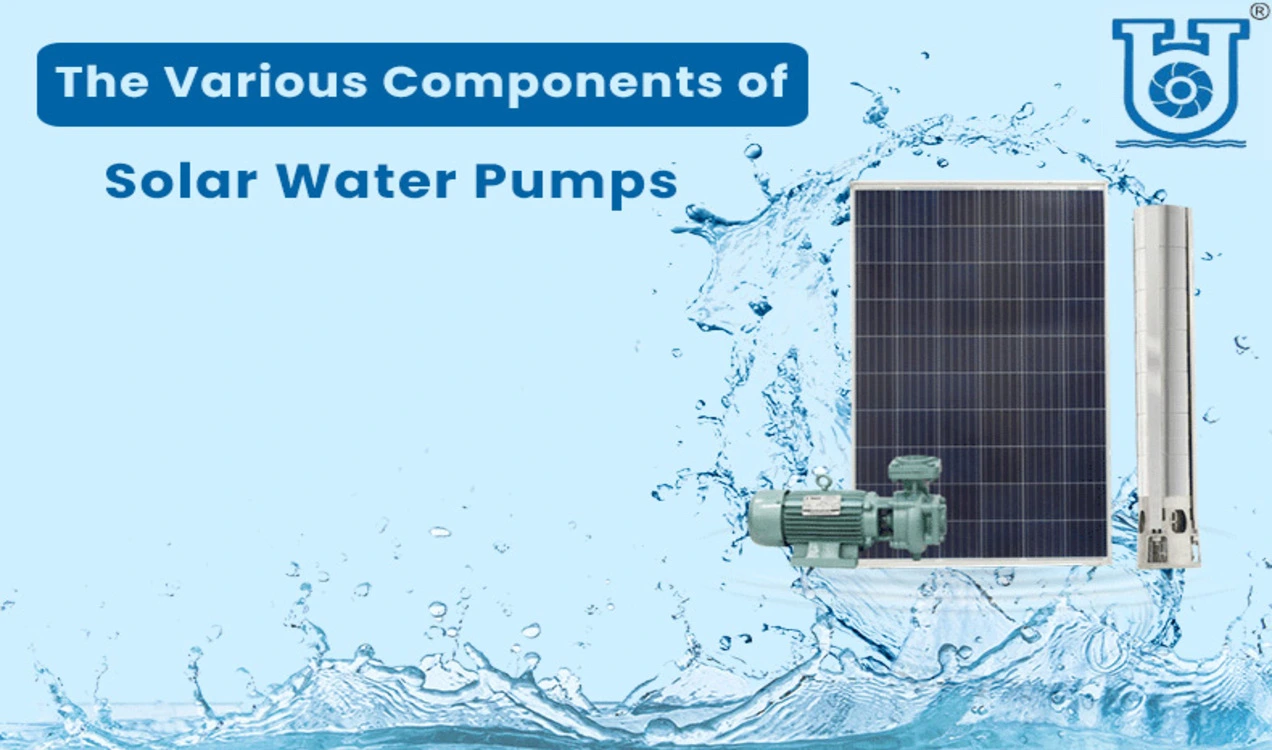Many parts of the world have increased concerns about access to a consistent water supply. Many towns use diesel-fueled devices to pump groundwater, which requires high maintenance and leads to high electricity bills.
Water pumps using solar energy are the most efficient solution to this problem because they provide maximum performance at a low cost, particularly in areas with a shortage of electricity. Rural communities off the grid that are currently underserved or only have access to expensive fuel-powered pumps have the biggest demand for solar pumps.
Although the technique may be used effectively in practically any location of the world, solar pumping is most competitive in areas with strong sun insolation, which includes some African regions, Latin America, regions around South Asia, and a few of Southeast Asia.
The Different Components in Solar Water Pumps:
Solar water pumps are adaptable and may be used to serve various purposes, such as accessing drinking water, animal irrigation, and other domestic purposes. An easy solar pumping system consists of the solar panel itself, the pump, and the power regulator. These devices are adaptable and can be used with a backup generator as well as the electrical grid.
Let’s talk about the different components of a solar water pump system and why they matter to the system as a whole.
Photovoltaic Solar System:
The solar water pump installations generate power using solar panels that take advantage of the photovoltaic effect. These solar panels transform solar photons into electricity by absorbing them. This is the major part of a solar water pump system.
A solar panel array is a collection of them. Many firms manufacture all of the photovoltaic solar panels on-site using strong materials that will ensure their longevity. The majority of the solar panels also come with mounting poles.
There are many other crucial parts of the water pump system, even though this one is the part of the solar pump system that truly generates the power.
The Water Pumps:
Another crucial component of the solar water machine is the water pump. You couldn’t build a water pump system without the pump! The apparatus that takes water from the reservoir for use in various applications is a pump. To assist with agriculture, farming, and other situations, water can be taken from a well, lake, or other sources.
Various company provides the pumps with both AC and DC input. Water may be lifted from considerable depths using submersible pumps.
The Control Electronics:
Control electronics, also known as solar water pump controllers, are typically included with solar water pump systems to enable various automatic operational configurations without the system operator physically present. This is crucial in off-grid and fountain uses as well as in situations where the user cannot monitor the system constantly.
The control electronics allow for the scheduling of water pumping as well as changes in flow rate and supply pressure. They are more than just start and stop switches. Modern controllers have online features that allow users to remotely check on the health and status of the system and any associated apps.
The Inverters:
An inverter is yet another crucial element to consider when purchasing a solar water pump system. Direct current (DC) output is converted by inverters into alternating current (AC), which may power electricity systems and an off-network.
Inverters are a crucial component of the solar machine since much electrical equipment, including water pumps, requires this conversion. When you require it, the inverter is a fantastic source of backup power. Even without solar power, an inverter can assist in keeping your water pump going if you’re having trouble getting through overcast or dimly lit days.
What to Review Before all of this?
Reevaluating the everyday water essentials is the best strategy for selecting suitable components. One may choose the appropriate water pump based on how many gallons or liters are needed each day and then determine how much electricity must be generated by the solar panels. The number of watts needed to provide the necessary water flow will be disclosed by the pump manufacturer.
Wrapping Up:
There may be many things about solar energy that you are unaware of. You might not even know where to start with your solar investment or what components you require.
However, given that you’ve read thus far, we may assume that you now understand everything you need to know about the components of a solar water pump.


